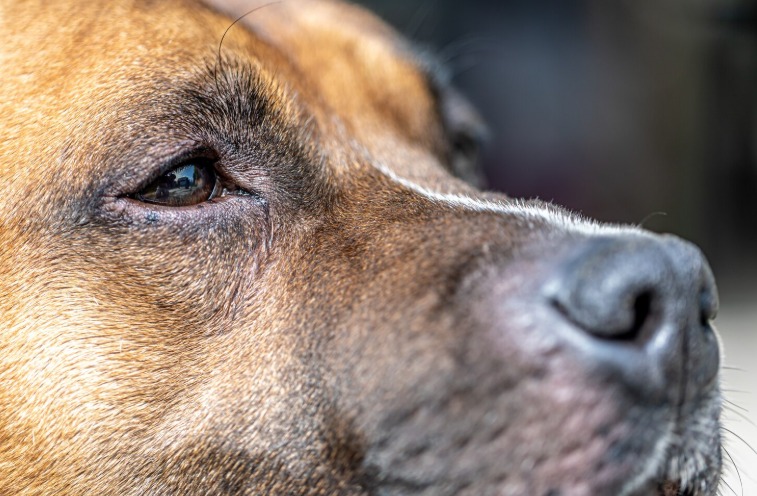When your dog starts bumping into furniture or their once-bright eyes begin to look cloudy, cataracts are often to blame. For many pet owners, the thought of surgery can feel daunting — both emotionally and financially. It’s no wonder that searches for “natural cures for dog cataracts” have increased in recent years. But can cataracts in dogs truly be reversed without surgery? Let’s explore what’s fact, what’s myth, and what options actually help your dog’s eye health.
What Are Cataracts in Dogs?
A cataract is a cloudy area that forms on the lens inside your dog’s eye, blocking light from reaching the retina and causing blurred vision or even blindness.
They can develop gradually or suddenly and vary in size — from a small speck to a lens that’s completely opaque.
Cataracts are often age-related, but they can also be caused by:
- Diabetes mellitus (a leading cause in dogs)
-
Genetic predisposition (common in breeds like Cocker Spaniels, Poodles, and Labrador Retrievers)
-
Eye trauma or inflammation
-
Nutritional deficiencies in puppies
While cataracts themselves don’t cause pain, they can lead to secondary issues such as inflammation (uveitis) or glaucoma, which are painful and can permanently damage vision.
The Appeal of “Natural” Remedies
Understandably, many dog owners hesitate to put their pets through surgery. Surgery is expensive and requires anesthesia, post-op care, and specialist expertise.
So, when owners read about “natural” or “non-surgical” cures — like eye drops, herbal supplements, or dietary changes — they’re eager to believe they might work.
However, most of these claims are misleading or unsupported by clinical research.
The Truth About “Cataract Eye Drops”
You’ve probably come across eye drops marketed as “natural cataract dissolvers” containing N-acetylcarnosine (NAC) or other antioxidants.
While these drops are sometimes promoted as miracle cures, scientific studies do not support their effectiveness in reversing established cataracts — in dogs or humans.
Some eye drops can reduce inflammation or support lens health, which may slow cataract progression in the very early stages, but they cannot remove or reverse a mature cataract once the lens fibers have become opaque.
In fact, relying on unproven drops may delay proper treatment, allowing the cataract to worsen and potentially lead to complications.
Do Supplements or Diet Changes Help?
Antioxidants like vitamin C, vitamin E, lutein, zeaxanthin, and omega-3 fatty acids are beneficial for overall eye health. Certain dog foods or supplements claim to “prevent or reduce cataracts,” and while they can support lens metabolism and reduce oxidative stress, they cannot dissolve cataracts that already exist.
Think of these supplements as preventive, not curative. They’re useful for dogs with early lens changes (nuclear sclerosis) or those genetically predisposed to cataracts, but they’re not a substitute for surgical removal.
What About Home Remedies?
You may see advice online suggesting apple cider vinegar, herbal rinses, or coconut oil drops for cataracts. These home remedies are not only ineffective but potentially harmful, as they can irritate your dog’s eyes or cause infection.
The eye’s internal environment is extremely delicate — applying non-sterile or acidic substances can worsen the situation and even damage the cornea or lens.
If something sounds too simple or too good to be true, it usually is. Always consult your vet before trying any home treatment.
When Surgery Is the Only Effective Option
Currently, surgery is the only proven treatment that can restore vision in dogs with cataracts. The procedure, called phacoemulsification, involves using ultrasonic waves to break up and remove the cloudy lens, followed by implanting a new artificial lens.
Success rates are very high — over 90% of dogs regain functional vision — and most pets recover well within a few weeks.
While the cost may seem high, surgery dramatically improves a dog’s quality of life, allowing them to see, play, and explore again.
How to Support Your Dog Naturally — The Right Way
Even though cataracts can’t be cured naturally, there are safe, evidence-based ways to support your dog’s eye health and slow progression:
- Feed a balanced, antioxidant-rich diet – choose foods with ingredients like blueberries, spinach, and fish oil.
-
Manage underlying conditions – if your dog has diabetes, keep their blood sugar levels tightly controlled.
-
Protect the eyes – avoid rough play or exposure to irritants.
-
Schedule regular eye exams – early detection is key to preventing complications.
-
Maintain good overall health – regular exercise and proper hydration support eye tissue health.
These steps won’t reverse cataracts, but they can keep your dog’s eyes as healthy as possible for longer.
There’s no natural cure that can make cataracts in dogs disappear — despite what some products promise. While supplements and drops may help in prevention and early support, surgery remains the only effective treatment for restoring lost vision.
That said, a holistic approach — including good nutrition, regular vet care, and managing underlying conditions — can make a world of difference in your dog’s comfort and happiness.
If you suspect your dog has cataracts, the best step is to book an eye exam with a veterinary ophthalmologist. With the right guidance and care, your dog can still enjoy a long, active, and fulfilling life — whether or not surgery becomes part of their journey.


